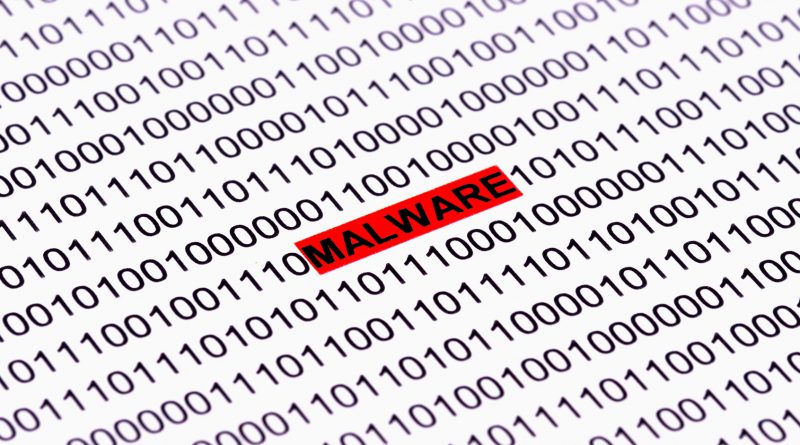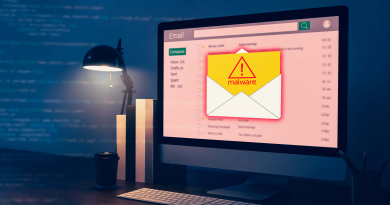How can I tell if my PC is infected?
4 signs your PC might be infected with malware – by Brook Stein, Director of Product Management
Years ago, computer hackers would brag about how many PCs they infected as a means of showing off their programming skills. They created newsworthy viruses with names like the “ILOVEYOU” or “Anna Kournikova” –named after the beautiful Russian tennis player, to tempt you to click on it. The goal was to cause damage to as many computers as possible, wiping out all the victim’s data or crashing thousands of PCs. These outbreaks wreaked havoc on businesses and governments as well as home users, causing millions of dollars in damage, but did nothing for the creators’ monetary gain.
With the rise of e-commerce and online banking, cybercrime has evolved. Just like criminals who rob banks with a gun and a sack, they go to where the money is. But unlike bank robbers, these criminals try their best to avoid detection and silently sneak in to do their damage. Because of the global reach of the Internet, they can do it outside the reach of local law enforcement.
Today, malware can sneak on to PCs and quietly listen and steal passwords, banking login credentials, credit cards, and other personal information, to be sold on the black market for profit.
However, not all malware is silent. There are some telltale signs.
Here are four examples of how to spot malware on your PC:
1. Your PC starts running slower
Some malware hides on your computer and monitors your connection to the Internet, looking for data to steal such as passwords, credit cards, and other personal information. This filtering process can slow your browsing speed down significantly. Once a cybercriminal has compromised a PC with malware, they can load additional malware on to it to control it remotely, slowing it down even further. An infected PC can be used to send out spam emails or attack other computers or servers without your knowledge, using up both bandwidth and computing power, slowing your PC to a crawl. Computers infected in this manner are called botnets.
2. Your friends receive strange emails from you
One of the ways malware spreads is to leverage their victim’s contact list. The malware, wrapped in a friendly message, replicates and emails itself to your friends, family, and coworkers in an attempt to infect them as well. This social engineering trick, called “phishing”, is designed to use your friends’ trust in you to get them to click on the enclosed infected file or link to a malicious website. Many times, these are poorly worded emails with obvious grammatical or formatting errors. However, cybercriminals are getting more sophisticated every year and these days they can look quite legitimate, borrowing forms from legitimate sources.
3. Unwanted toolbars or extensions on your web browser
If you notice pop-ups happening while you browse the web, your browser might be compromised by malware that has installed an extension to your web browser without your knowledge. This is a very dangerous form of malware because it can monitor your web traffic and steal banking logins, credit cards, and other sensitive data. Identify theft could be just a click away.
4. Unknown software loading when you power up your PC
When your computer is turned on, there’s a list of applications that automatically start up during the boot process. One of the tricks cybercriminals use to infect PCs is to quietly add their malware to that list.
If you see applications load during the startup process and then close quickly, or you don’t recognize something during startup and you have not recently installed any software, it could mean you’ve been infected.
This is very serious. Malware that has added itself to the startup process can be very hard to remove and a thorough scan and possibly a reinstallation of the operating system may be required to clean it. In many cases, it’s best to seek help from a qualified support technician who specialises in malware removal.
How do I keep my PC safe?
1. Make sure you are using the latest version of Microsoft Windows. With every release, there are improvements made to provide better security. Additionally, make sure you keep up with the latest Windows updates by setting your PC to update to the latest updates automatically.
2. Make sure the firewalls on your PC and your home’s wireless network are turned on. A firewall sits between your computer or router and the Internet and monitors network traffic, preventing cybercriminals from infiltrating your network or your PC from the Internet.
3. If you take your laptop on the road with you, be sure to use VPN software on public networks such as airports and coffee shops and hotels.
4. Back up your data! One of the newest and nastiest forms of malware is called ransomware. Ransomware encrypts all the files on your PC and demands you pay for the key to unlock them. Use the 3-2-1 method to keep your data safe and recoverable.
5. One of the most popular ways cybercriminals spread malware is through emails that look just like they come from your bank, the government, law enforcement, a coworker, or a friend. Don’t open any attachments or click any links in emails unless you first verify they’re legitimate. In fact, it’s best not to click links, but rather to open a browser yourself and type in the web address or google it if you aren’t sure it’s legitimate.
6. Scan your PC with independent lab certified security software on a weekly basis to root out any malware that may be present. Most security software has the ability to set a schedule for the scan to be performed automatically, so you don’t have to remember to do it yourself.
Trend Micro Security provides online protection against malware and ransomware using advanced machine learning-based technology —so you can enjoy your digital life safely. It helps protect you from identity theft, viruses, phishing, online scams, and more. Top-rated by industry experts, Trend Micro Security delivers 100% protection against web threats.* Learn more at trendmicro.com.
*AV Comparatives, “Real-World Dynamic Protection Test”, April & May 2017
Originally published on blog.trendmicro.com.




